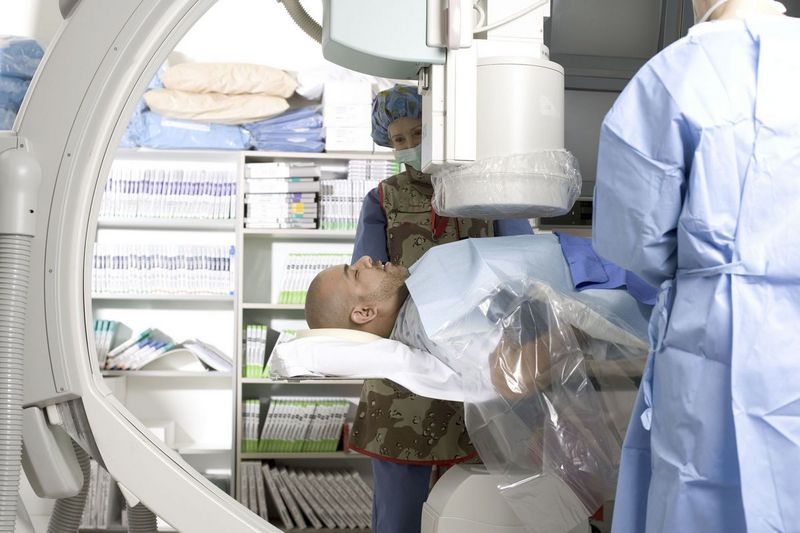
FRIDAY, Jan. 11 (HealthDay News) — Treating aggressive brain tumors called glioblastomas with smaller, more focused areas of radiation does not increase the likelihood of tumor recurrence, a new study finds.
Restricting the radiotherapy to a smaller zone also spares the rest of the brain and preserves patients’ brain function, the researchers note.
One outside expert explained that for many years, radiation treatment was spread over a larger area of the brain.
“Glioblastoma multiforme is one of the most deadly brain cancers despite aggressive treatment with surgery, radiation therapy and chemotherapy,” said Dr. Louis Cornacchia, director of neurosurgery at Brookdale University Hospital and Medical Center, New York City. “For this reason, doctors who give radiation therapy have tended to treat the tumor plus a large margin (10 to 20 millimeters or more) outside the tumor on the theory that more radiation might improve outcomes.”
However, “the down side is that the more brain that gets irradiated, the higher the risk of complications like cognitive [mental] dysfunction and radiation necrosis [tissue death],” Cornacchia said.
But the new study suggests that focusing radiation on a narrower area might have its advantages.
“We are the first to show definitively that people with smaller margins [areas of treatment] don’t do any worse than those with larger margins,” the study’s lead investigator, Dr. Michael Chan, assistant professor of radiation oncology at Wake Forest Baptist Medical Center, said in a university news release.
“For patients with glioblastoma, we now know we can safely and effectively treat them with smaller radiation fields to spare the rest of their normal brain. That’s important because it lessens the symptoms from radiation toxicity like tiredness and nausea.”
For the study, published recently online in the American Journal of Clinical Oncology, researchers examined the medical records of 161 patients treated over the past decade for glioblastoma.
Although medical advancements have not dramatically improved patients’ long-term survival rates, the researchers noted that using smaller radiation margins may improve patients’ quality of life.
“Treatments have gotten better over time and people with glioblastoma may live longer than they had in the past. Our study found that the margins did not affect where the [tumor] came back or how long it took it to come back and it did not affect the overall survival,” Chan pointed out. “This could potentially be practice-changing.”
Another outside expert agreed.
“This study is further proof supporting the trend towards using focal radiation treatments for patients with brain tumors,” said Dr. Michael Schulder, vice chairman of the department of neurosurgery at North Shore University Hospital in Manhasset, NY.
“The concerns that many people have that radiation will cause brain injury have been to a large extent alleviated by modern techniques of radiation therapy,” he noted.
Schulder believes that with the increased use of radiation that spares normal tissues around tumors, these therapies “will play an increasingly important role in managing tumors throughout the body and in particular the brain.”
For his part, Cornacchia said that while the results of the new study are promising, “more powerful prospective, double-blind studies will be required to more confidently resolve the controversy of how large a treatment margin is best for treatment of glioblastoma multiforme tumors.”
More information
The American Cancer Society provides more information on the effects of radiation therapy.

